It Was a Dark and Stormy Novel
You've decided to write the Great American Novel, but what tool should you use? Some authors swear by a box of #2 pencils and a stack of legal pads. Others use Word or Open Office Writer. And then there's Simon Haynes. When he set out to write the Great American Novel, he knew that it was impossible. For one thing, he's Australian. But beyond that, he didn't like any of the available tools. Because Simon is also a programmer, he wrote his own novel-writing program. And then he did the unthinkable: He started giving it away to anyone who would take it.
I've never written a novel, but I've thought about it. It's been said that inside every journalist is a novel and that with any luck that's where it will stay. I have read a lot of novels and I'm attentive enough to know that a well crafted novel depends on paying attention to details. Your hero can't very well be a short, red-haired Swede in one chapter and a tall, bald Ukrainian 5 chapters later. Or he can't unless that change is an important plot element. Kurt Vonnegut wrote a lot of things that could never possibly have happened, but it worked out OK for him.
You are not Kurt Vonnegut, though. If you were, you'd be dead. And besides, readers generally depend on consistency. If Martha suddenly becomes Marta or Marsha, you'll have an unhappy reader.
Click any of the smaller images for a full-size view.
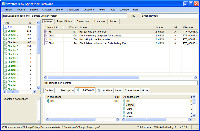 So the program Haynes created does more than just give you a place to type exposition and dialog. Integrated into the application are features that allow you to create a character's back story, retain a description, track all the characters in the book and in a given scene (if Joe is in Venezuela, you don't want him to stop by the hero's Paris apartment for tea one evening), locations, items, and all the other myriad details that must be kept in mind.
So the program Haynes created does more than just give you a place to type exposition and dialog. Integrated into the application are features that allow you to create a character's back story, retain a description, track all the characters in the book and in a given scene (if Joe is in Venezuela, you don't want him to stop by the hero's Paris apartment for tea one evening), locations, items, and all the other myriad details that must be kept in mind.
So, yes, it's sort of a word processor except that it doesn't have mail merge, tables, outlining, math formula editing, and all the other features that mean absolutely nothing to someone who is writing a novel. And it won't write the novel for you. It won't even suggest any really cool plot twists. What it will do is keep track of your work so that you can concentrate on character development and the plot.
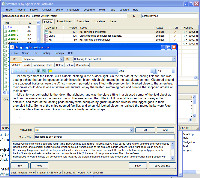 Within about 2 minutes of installing YWriter, I understood how useful this tool could be to an aspiring writer (or an experienced writer), and why. The benefits are a combination of features that are present and features that are absent. The author shouldn't be concerned with the typeface, the size of the type, bold and italics, and all of the other formatting. So none of that is present in the program.
Within about 2 minutes of installing YWriter, I understood how useful this tool could be to an aspiring writer (or an experienced writer), and why. The benefits are a combination of features that are present and features that are absent. The author shouldn't be concerned with the typeface, the size of the type, bold and italics, and all of the other formatting. So none of that is present in the program.
Haynes is the author of the Hal Spacejock comedy series (and I have to admit that I've never heard of that series). It's published by Fremantle Press and distributed by Penguin Australia. Haynes even offers a free copy of the first book on his website.
According to Haynes, "I really struggled with my first novel because I wrote slabs of text into a big word processor file and I just couldn't make sense of the whole thing at once. No real overview, no easy jumping from scene to scene, nothing." So then he tried saving each chapter to an individual file, but moving scenes between files was a nuisance and having the novel broken up into 32 files was distracting.
Finally he tried saving each scene of each chapter as a file. The book turned into 200+ files and organization was a challenge. "As a programmer I'm used to dealing with projects broken into source files and modules, and I never lose track of my code. I decided to apply the same working method to my novels and YWriter was the result."
The program concentrates on "scenes" instead of chapters. A chapter may have one or many scenes. This is clever because it allows the writer to keep one small segment of the book in mind while working on it, but provides a structure for linking the scenes together into a coherent whole.
YWriter Has Your Back
I'll bet you know somebody who has spent all day working on something only to have the computer crash half an hour before quitting time. Yes, that person should have saved the work several times during the day, but didn't. Now the entire day's work is lost.
That won't happen with YWriter because it does automatic backups of your work as you're writing. And you can't exit the program without saving. It's automatic. It also creates automatic zip files of the entire project, by date, so you can go back to a previous version if you decide that you've wandered off course.
You can't expect a publisher to have YWriter installed, so when the book (or any section of it) is complete, you can export it to RTF (the standard word processor exchange format) or HTML. Then you can open it in Word or Open Office Writer and start playing with heads, subheads, bold, and italics.
 Bottom Line: If you're writing a novel, YWriter is what you need.
Bottom Line: If you're writing a novel, YWriter is what you need.
Using Word to write a novel is a challenge because the spelling checker is on and reminding you of misspelled words when you should be concentrating on the plot. Even worse, there's the urge to apply formatting as you go. Clear your mind! Use YWriter instead.
For more information, visit the YWriter website.
Fulfilling "the Internet's unfulfilled promise"
That's how Lawrence Eng, a product analyst for Opera Software, describes Opera Unite. What the statement lacks in modesty it makes up in excitement. Unite is the next version of the Opera browser and the browser incorporates file sharing, a chat service, photo and audio sharing, and even a Web server inside the browser. As much as I like the goals set for Unite, though, I'm a bit concerned by some of the security implications.
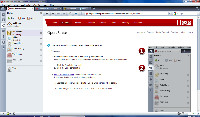 To use the server part of Unite, you'll need to be running Opera, but it doesn't matter which browser others are running when they connect to your computer. The technology, in fact, isn't new; including the technology in a browser is a breakthrough, though.
To use the server part of Unite, you'll need to be running Opera, but it doesn't matter which browser others are running when they connect to your computer. The technology, in fact, isn't new; including the technology in a browser is a breakthrough, though.
I installed Opera Unite on my notebook computer running Windows 7 RC1.
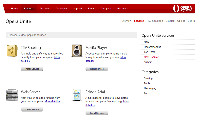 Opera (the company) becomes a sort of operator. When you start Opera Unite on your computer, it connects to unite.opera.com and identifies your computer. When your friends want to view files on your computer or leave a message for you, they use a URL that looks like this: http://computer_type.user_name.operaunite.com/_target/. A real URL could be http://desk.bill.operaunite.com/_root/content/. If a user named "bill" had logged in to Opera Unite with a computer named "desk", this link might take you to the main content screen. I say "might" because, depending on how "bill" set up the security for "desk", you might have no access at all, limited access with a password, or full access without a password. (Don't try any of the links shown here. They're not mine.)
Opera (the company) becomes a sort of operator. When you start Opera Unite on your computer, it connects to unite.opera.com and identifies your computer. When your friends want to view files on your computer or leave a message for you, they use a URL that looks like this: http://computer_type.user_name.operaunite.com/_target/. A real URL could be http://desk.bill.operaunite.com/_root/content/. If a user named "bill" had logged in to Opera Unite with a computer named "desk", this link might take you to the main content screen. I say "might" because, depending on how "bill" set up the security for "desk", you might have no access at all, limited access with a password, or full access without a password. (Don't try any of the links shown here. They're not mine.)
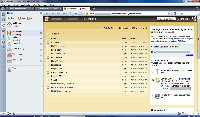 At the right is a screen that shows the file-sharing application. Users may download files from the notebook, but cannot add or change files.
At the right is a screen that shows the file-sharing application. Users may download files from the notebook, but cannot add or change files.
Opera gives developers a chance to develop applications for Unite. So far, the services available are called file sharing, fridge, media player, photo sharing, the lounge, and Web server. They are all installed by default when you install version 10 of the browser. They don't start functioning until you create an Opera Unite account and turn them on.
Test versions are available for Windows, Mac, and Linux machines. Opera plans to expand coverage to mobile phones and other devices.
Eng says that these initial applications are "just simple demos that replicate existing services and online functionality." Unite offers developers an opportunity to envision and then create new ways for people to interact online.
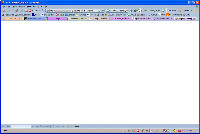 When you try to connect with a computer running Opera Unite, don't expect success every time. It appears that more than the expected number of people have downloaded Unite and the Opera server is a bit overloaded. (At right)
When you try to connect with a computer running Opera Unite, don't expect success every time. It appears that more than the expected number of people have downloaded Unite and the Opera server is a bit overloaded. (At right)
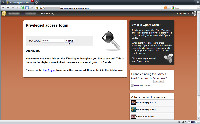 After a few minutes, I was able to obtain a connection and, as expected, I was asked for a password before being allowed to see the files.
After a few minutes, I was able to obtain a connection and, as expected, I was asked for a password before being allowed to see the files.
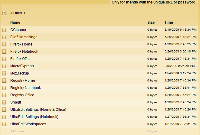 After providing the password, I'm allowed to see the single shared directory on the notebook computer. That directory has several subdirectories. To see the contents of a subdirectory, click it.
After providing the password, I'm allowed to see the single shared directory on the notebook computer. That directory has several subdirectories. To see the contents of a subdirectory, click it.
 From here, I could download the file to my computer, but I cannot change the file on the notebook computer, delete it, or add a file.
From here, I could download the file to my computer, but I cannot change the file on the notebook computer, delete it, or add a file.
"When we first talked about media applications created for Opera Unite, one idea was a simple music player," Eng says. "I would play a song on my computer and my friends would then hear the same song on their machines." That led to the question of whether anyone would find that sufficiently worthwhile to use. And probably there were legal questions involving the Recording Industry Association of America.
Then Eng had an idea for a "virtual jukebox". What if he and some of his friends each selected 10 tracks from their individual collections, put the list in a queue, and then let the jukebox play the selections in random order from the various computers. I suspect that some users will find this to be worthwhile, amusing, and maybe even amazing. It's not something that appeals to me, though.
![]() Now, let's take a look at the fridge.
Now, let's take a look at the fridge.
 "Fridge" is a silly application, but it opens the door to new ways to work collaboratively. On the desktop (left) I compose a short note and stick it to the fridge.
"Fridge" is a silly application, but it opens the door to new ways to work collaboratively. On the desktop (left) I compose a short note and stick it to the fridge.
 On the right (notebook), I can see the contents of the note and the e-mail address of the writer. Those who connect to your computer can see the other notes and the sender's name, but not the e-mail address.
On the right (notebook), I can see the contents of the note and the e-mail address of the writer. Those who connect to your computer can see the other notes and the sender's name, but not the e-mail address.
Another possibility: Multi-player games. These could range from an on-line game of chess or some other two-player game all the way up to a large role-playing game.
Or, for the more practical-minded folks, it could be used to allow people to work collaboratively on documents without having to host them on a publicly-accessible server. Eng says it would be possible to create a system that would allow multiple users to make changes simultaneously on a document.
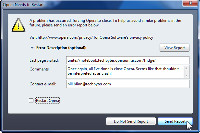 It's an interesting idea and one that deserves serious consideration as once again a small company in Norway proves how innovative it can be. But it's still clearly beta software. Simply closing Opera 10 routinely generates a crash error message.
It's an interesting idea and one that deserves serious consideration as once again a small company in Norway proves how innovative it can be. But it's still clearly beta software. Simply closing Opera 10 routinely generates a crash error message.
These kinds of problems will undoubtedly be solved in the near future, but watch out for them if you download and test the beta version.
Registry Mechanic: A Cautionary Tale
Registry Mechanic, as the name implies, is a tool that's used to clean, repair, and compact the Windows Registry. It has a decent reputation and no small number of people who recommend it. But, in part, Registry Mechanic was responsible for turning one of my computers into a temporary doorstop. It's all better now that I've reinstalled the operating system and restored both the applications and the data, but this is a good reminder that even well recommended tools can't always save the day.
A couple of facts are worth mentioning here:
- The operating system was showing signs of distress before I used Registry Mechanic.
- The Windows Registry represents what is essentially a single point of failure.
In other words, I can't blame System Mechanic for causing the problem, only for making it worse than it already was. So the moral of the story, and I'm putting the moral before the story, is never to assume that a magic-bullet will fix a computer problem and always have a full, complete, and verified backup ready to save the day.
I had been experiencing near-lockup conditions whenever I right-clicked a file or folder name in Windows Explorer. That suggested there was a problem with the context menu entries. Using a tool that can selectively enable and disable items in the context menu, I was unable to find one, or any combination, that was causing the problem. Knowing that reinstalling Windows would probably be the solution, I turned to Registry Mechanic as a final attempt to avoid the process. I expected that Registry Mechanic would solve the problem (unlikely) or leave things pretty much as they were.
Click any of the smaller images for a full-size view.
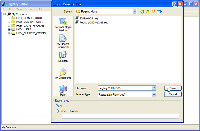 The first step was to back up the Registry. Although I assumed Registry Mechanic wouldn't make the situation worse, I intended to have some safeguards in place.
The first step was to back up the Registry. Although I assumed Registry Mechanic wouldn't make the situation worse, I intended to have some safeguards in place.
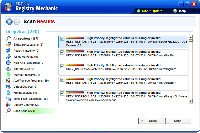 Registry Mechanic told me that it found an astounding 387 errors in the Registry. As I looked through the list, I concluded that most of the "errors" were trivial and had nothing to do with the problem at hand. For reasons beyond my understanding, it seems that most protective tools (registry cleaners, antivirus applications, anti-spyware applications, and the like) do their best to frighten people with needless warnings.
Registry Mechanic told me that it found an astounding 387 errors in the Registry. As I looked through the list, I concluded that most of the "errors" were trivial and had nothing to do with the problem at hand. For reasons beyond my understanding, it seems that most protective tools (registry cleaners, antivirus applications, anti-spyware applications, and the like) do their best to frighten people with needless warnings.
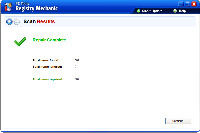 I told Registry Mechanic to proceed with its changes and it reported that it had fixed all 387 problems.
I told Registry Mechanic to proceed with its changes and it reported that it had fixed all 387 problems.
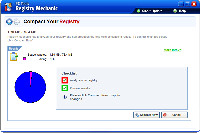 It then offered to compact the Registry. The 76 MB Registry was wasting all of 1.5 MB. But I allowed the process to continue.
It then offered to compact the Registry. The 76 MB Registry was wasting all of 1.5 MB. But I allowed the process to continue.
The process appeared to terminate normally and Registry Mechanic said that I needed to restart the computer.
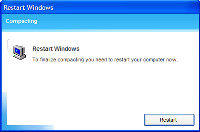 And that's when the problem started.
And that's when the problem started.
The computer booted and I was able to log in, but the printer wouldn't function. As I tried to fix that problem, other problems arose. Eventually, most of the peripheral devices stopped functioning.
And the context menu problem was still present.
So I did what I should have done previously: Reinstalled Windows, reinstalled the applications, and restored the data from backup.
It's worth reiterating that I do not hold Registry Mechanic solely responsible for the problem, but I do consider it to be an unindicted co-conspirator and I have not reinstalled it.
Short Circuits
The Google Operating System
Google finally made it official this week. There have been rumors for the better part of a year that Google would release its own operating system. The company now admits that it's working on just such a product and I suspect that this has not been accepted with equanimity in Redmond. Microsoft knows what to fear and "what to fear" is not Apple. Apple's hardware and operating system are demonstrably different from Microsoft's. Some would say "better". I might say "better", but only if I would be allowed to qualify the statement. Google's operating system won't necessarily be better, but it sure sounds like Linux.
The Chrome OS (named in conjunction with Google's browser) will be targeted to "netbook" computers, the inexpensive and small machines that seem to be showing up everywhere these days. Google plans to make Chrome OS available in the second half or 2010.
Will it be Linux? Google developed Android, an operating system for mobile phones, and some netbook manufacturers are using it.
The Forecast for Cloudy Computing
Google's view of the future looks to the past. Applications would be delivered via the Internet and would replace software on the desktop. The irony of this is that desktop computers became so popular because they freed users from the tyranny of centralized control and centralized applications. But Google sees a future in which applications will run inside a Web browser.
Today, Microsoft has about a 90% share on the desktop and at least a 75% share when it comes to standard office applications such as word processing, spreadsheets, and the like. It's going to be an up-hill battle for Google, but the company has the resources (both money and personnel) to wage an effective campaign.
Google's online applications are already being used by at least 2 million companies, but these are primarily small businesses. Companies large enough to have a corporate IT staff and a corporate legal staff have so far stayed away from computing "in the cloud".
According to the Google blog: "Google Chrome OS is a new project, separate from Android. Android was designed from the beginning to work across a variety of devices from phones to set-top boxes to netbooks. Google Chrome OS is being created for people who spend most of their time on the web, and is being designed to power computers ranging from small netbooks to full-size desktop systems. While there are areas where Google Chrome OS and Android overlap, we believe choice will drive innovation for the benefit of everyone, including Google."
Is it really Linux? Well, there's certainly a call to the "open-source community": "We have a lot of work to do, and we're definitely going to need a lot of help from the open source community to accomplish this vision."
Why Can't the Cost of Cars Do This?
Every time I buy a hard drive, I do the math. I'm always amazed. The first hard drive I bought was a 5-inch, full-height drive that held 16 MB of data. It was in a separate box the size of a shoe box and a thick cable connected it to the computer. This would have been about 1983 or 1984. The hard drive cost around $1200. $100 in those days had the buying power of nearly $300 today, so in today's dollars, that disk drive would be valued at $3600. A couple of weeks ago, I bought an extra 1.5 TB hard drive for the computer. It cost $120.
If I calculate the cost per megabyte using the unadjusted cost of $1200, the 1984 drive had a cost of $75 per megabyte. Now consider the 1.5 terabyte drive for $120. Its cost per megabyte is $0.00008 (8 thousandths of a cent). A more accurate number for the older drive would adjust the value to today's dollars. So instead of $75 per megabyte, it has a cost per megabyte that would be equivalent to $225 in today's dollars. Wow.
How much space does one need? I have a lot of audio files, both music files and the much larger production files needed to create the TechByter Worldwide podcast. And I have a lot of photographs. When every single raw image consumes 10 megabytes and images that have been adjusted in Photoshop can grow to 50 megabytes or more, images can take up a lot of space. So maybe I need a little more disk space than average even though I don't do much with video. I mention that because video applications need even more space.
Currently the desktop computer has a 200 GB hard drive for Windows and the applications. A second 500 GB hard drive holds most of the data in a 350 GB partition. The remainder of the drive is used by Linux. The new drive is partitioned into two logical drives, 700 GB and 800 GB. Two external hard drives hold miscellaneous files (250 GB) and a hot backup of all current critical production files (500 GB).
Had someone told me, in 1984, that I would someday have a desktop computer with more than 3 terabytes of disk space available, I would have calmly explained that 1) My house would not be large enough for that much disk storage, 2) I couldn't afford the electricity required to run that much storage, and 3) I could never earn enough money to pay for that much storage if I lived to be 1000 years old.
After all, in 1984, 3 terabytes of storage would have cost $75 million.
Too Many Drive Letters
My desktop computer has 3 internal drives and 2 external drives. I know that the Carbonite backup service won't see the USB drives, but after I installed a 3rd internal hard drive and partitioned it so that the drive would appear as drives M and N, Carbonite didn't see those drives, either. When I asked Carbonite's tech support staff about the problem, the responses indicated that they didn't comprehend the problem, so I contacted Carbonite's CEO, David Friend, who probably is beginning to wish that he had never given me his e-mail address.
D. Friend: Let me see if I can get some information for you... I’ll bet nobody in customer support has ever encountered this.
B. Blinn: Always pleased to provide an edge condition for analysis! ;=}
Today the N drive seems to be recognized, but the M drive hasn't been yet. The N drive has a lot of easily replaced clipart files, so I've eliminated the directories that contain those files from the backup.
D. Friend: Love those edge cases. We have an investor named XXXXXXX who was the inventor of XXXXX (you old enough to remember that one?) and he not only has weird drive letters, but he has no C: drive – too worried about security. That one had us stumped for a while.
B. Blinn: XXXXXXX? Oh, yeah. I go back before then. I remember when God® invented Dirt™. (Dirt is still waiting for inclusion on the Primary Register.)
D. Friend: Curious why we’re finding your M drive but not the N. I’ll see if anyone in QA has any ideas.
B. Blinn: The odd thing is that Carbonite is seeing N (lower) but not M. Based solely on what I've just seen, I suspect that M will show up sometime in the next week or so.
Now, a week or so later, Carbonite's software engineers are still working to understand the problem and drive M still hasn't displayed a Carbonite context menu.


 The author's image: It's that photo over at the right. This explains why TechByter Worldwide was never on television, doesn't it?
The author's image: It's that photo over at the right. This explains why TechByter Worldwide was never on television, doesn't it?
